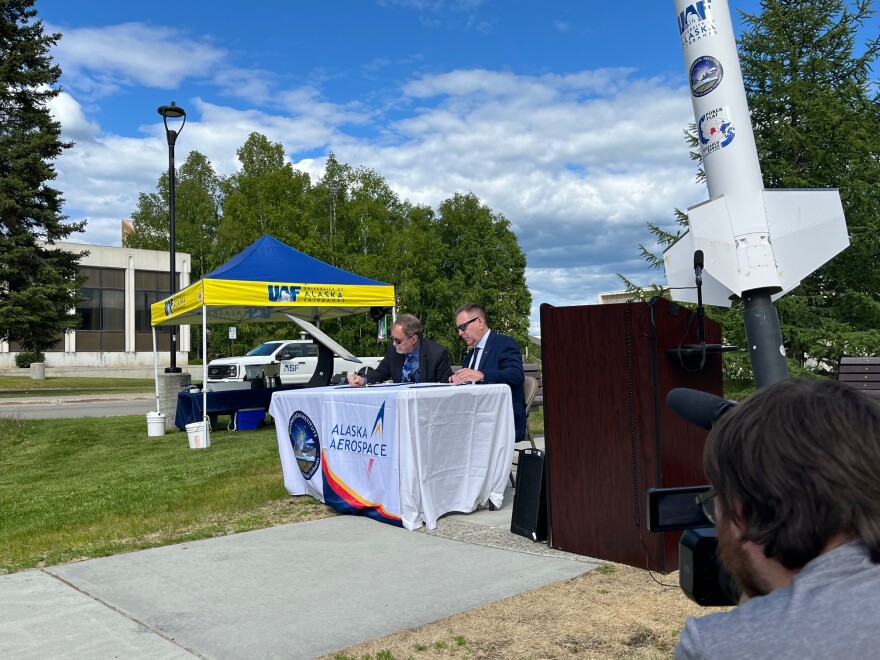GI, company agree to joint effort to attract Lower 48 customers to Alaska's two rocket launch facilities
Officials with the University of Alaska Fairbanks Geophysical Institute and Alaska Aerospace Corporation announced a wide-ranging agreement Tuesday to tap into the growing market for rocket launches from the state’s two launch facilities.
Geophysical Institute Director Bob McCoy told a couple dozen people in an outdoor ceremony on the UAF West Ridge that the agreement will establish a closer relationship between the institute and Alaska Aerospace. And it’ll increase the number of rocket launches at UAF’s Poker Flat Research Range north of Fairbanks and the Pacific Spaceport Complex on Kodiak Island.

“So this partnership is going to be outstanding,” McCoy said. “It’s going to allow a higher tempo of launches, and ultimately orbital launches, from Poker and Kodiak.”
Alaska Aerospace President and CEO John Oberst also praised the agreement that’s spelled out in a memorandum of understanding that he and McCoy signed. He said the agreement will benefit both of Alaska’s spaceports and those in the Lower 48, where a high demand for launch facilities have created a backlog and long delays for customers.
“ We have a history both at the UAF GI and Alaska Aerospace of decades of successful launch, both suborbital and orbital,” Oberst said. “We got the right mix for the needs of the country, and the country right now is demanding more access to space. And we can provide it. We can do it for science, we can do it for government launch, and we can do it for commercial launch.”
Poker Flat’s launch facility is designed for suborbital launches that usually involve research payloads that aren’t designed to be put into orbit. But Oberst said in an interview that the agreement will enable Alaska Aerospace to share personnel and their expertise to facilitate orbital launches from Poker Flat and more research missions from the Kodiak spaceport.
“We can give our mutual customer an option,” he said. “Now, they can launch up here or they can launch down in Kodiak.”
A Geophysical Institute news release says the agreement will enable it and Alaska Aerospace to jointly develop and provide spaceport services to the booming commercial rocket and satellite industry. Oberst said customers may welcome Alaska’s expanded spaceports, rather than endure long waits for a launch at the nation’s busiest facilities like Cape Canaveral in Florida and Vandenburg Space Force Base in California.

“There is a traffic jam,” he said. “What that means is there's more requirements to access space than there ever has been before. A lot of that is going to what's called ‘super heavy’ and, and ‘heavy lift,’ -- the Falcon Nines, the Starship, when it comes online … and the other large rockets that NASA procures.”
Oberst says that’s why smaller companies are already attracted to Alaska’s launch facilities.
“The smaller guys -- they're not throwing up hundreds of satellites at a time. They're throwing up one or two,” he said. “They need some place to go where they can actually launch. And so they're looking at Alaska for that.”
McCoy says public- and private-sector customers that want to launch science- and research-related payloads also likely will be attracted to Alaska’s spaceports. The Geophysical Institute owns the Poker Flat Research Range and operates it under a contract with NASA.
“This partnership should allow more launches,” he said. “Lower the cost, which is a barrier -- it's expensive to get to space. And so we're hoping that this will allow us to do more science.”
He said that development at both spaceports likely won’t cost the state or Alaska Aerospace much money, because most of that cost will be paid for by their customers.



